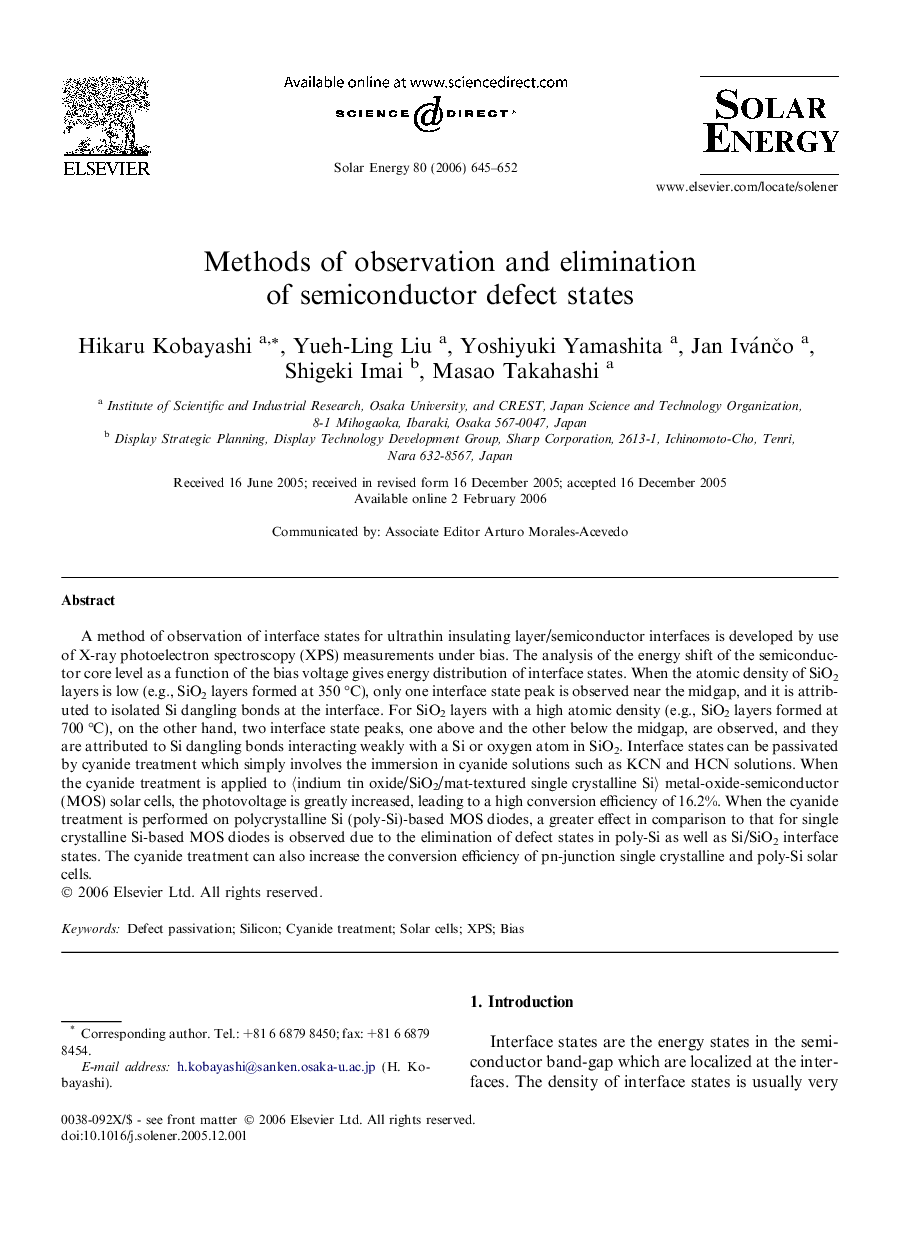| Article ID | Journal | Published Year | Pages | File Type |
|---|---|---|---|---|
| 1552348 | Solar Energy | 2006 | 8 Pages |
A method of observation of interface states for ultrathin insulating layer/semiconductor interfaces is developed by use of X-ray photoelectron spectroscopy (XPS) measurements under bias. The analysis of the energy shift of the semiconductor core level as a function of the bias voltage gives energy distribution of interface states. When the atomic density of SiO2 layers is low (e.g., SiO2 layers formed at 350 °C), only one interface state peak is observed near the midgap, and it is attributed to isolated Si dangling bonds at the interface. For SiO2 layers with a high atomic density (e.g., SiO2 layers formed at 700 °C), on the other hand, two interface state peaks, one above and the other below the midgap, are observed, and they are attributed to Si dangling bonds interacting weakly with a Si or oxygen atom in SiO2. Interface states can be passivated by cyanide treatment which simply involves the immersion in cyanide solutions such as KCN and HCN solutions. When the cyanide treatment is applied to 〈indium tin oxide/SiO2/mat-textured single crystalline Si〉 metal-oxide-semiconductor (MOS) solar cells, the photovoltage is greatly increased, leading to a high conversion efficiency of 16.2%. When the cyanide treatment is performed on polycrystalline Si (poly-Si)-based MOS diodes, a greater effect in comparison to that for single crystalline Si-based MOS diodes is observed due to the elimination of defect states in poly-Si as well as Si/SiO2 interface states. The cyanide treatment can also increase the conversion efficiency of pn-junction single crystalline and poly-Si solar cells.
